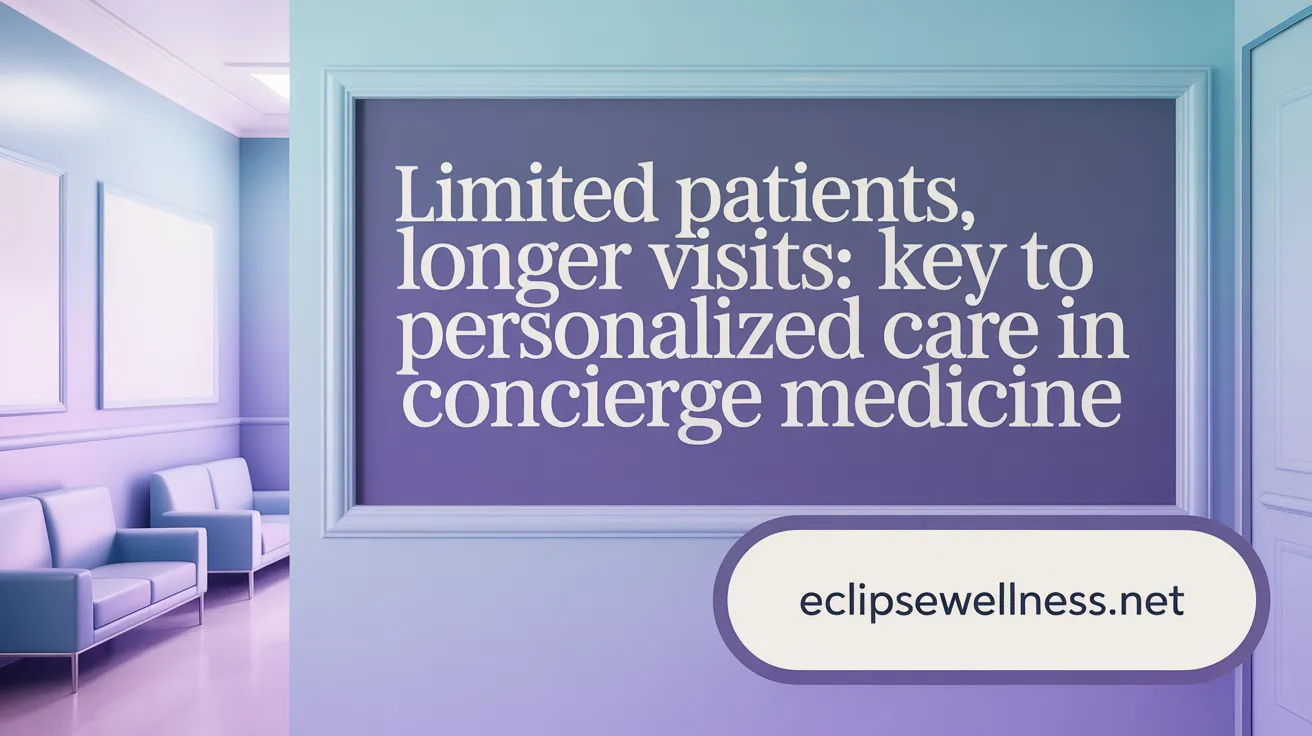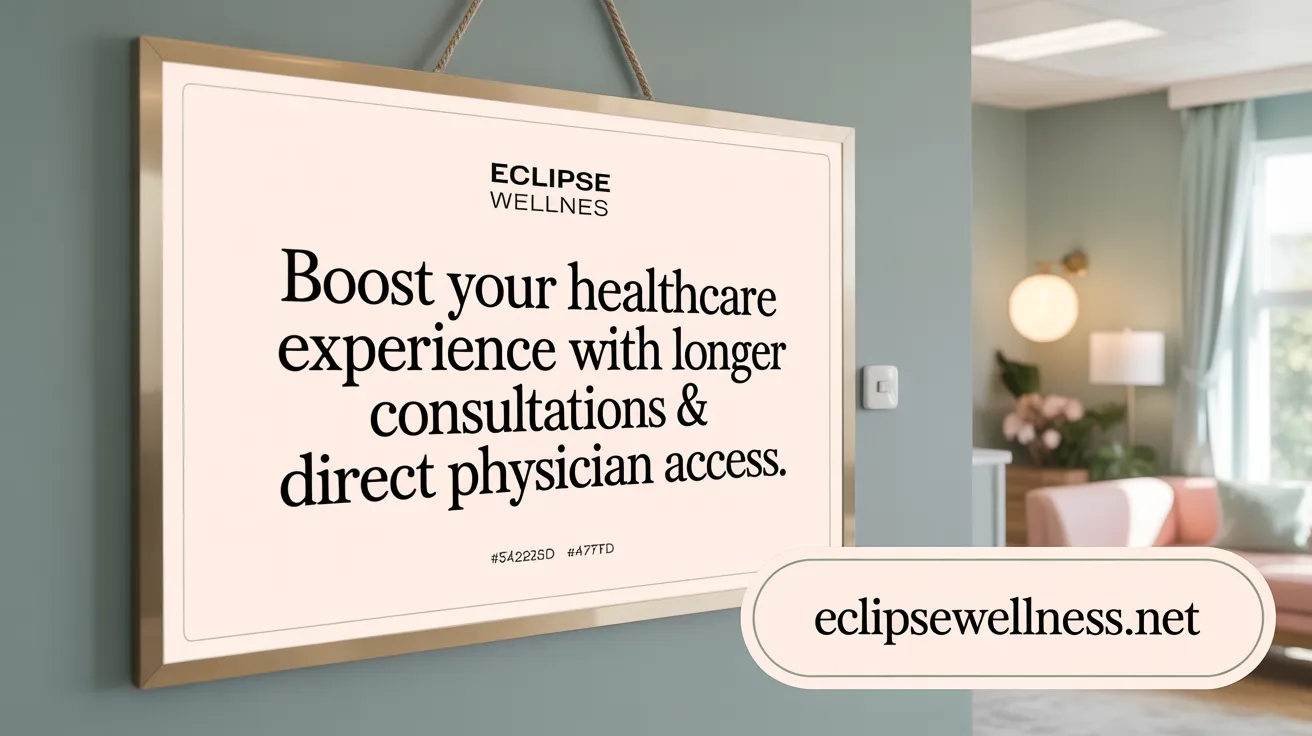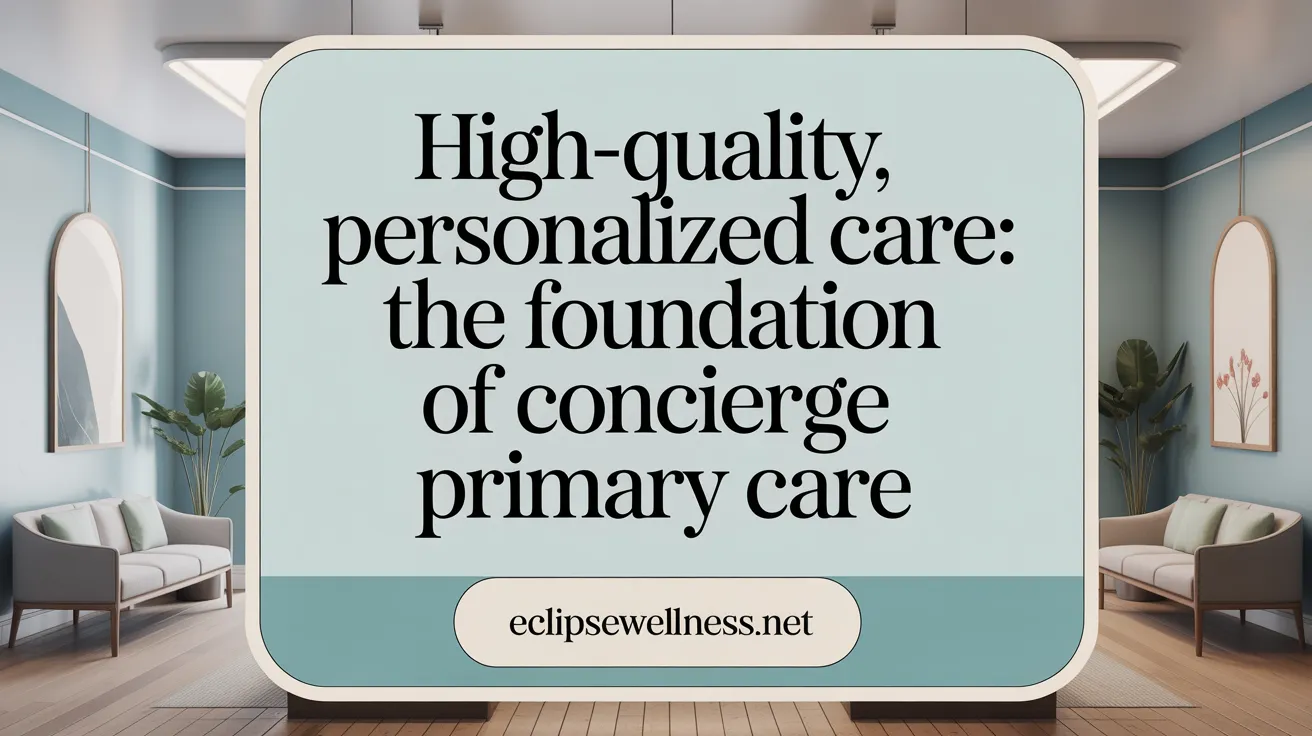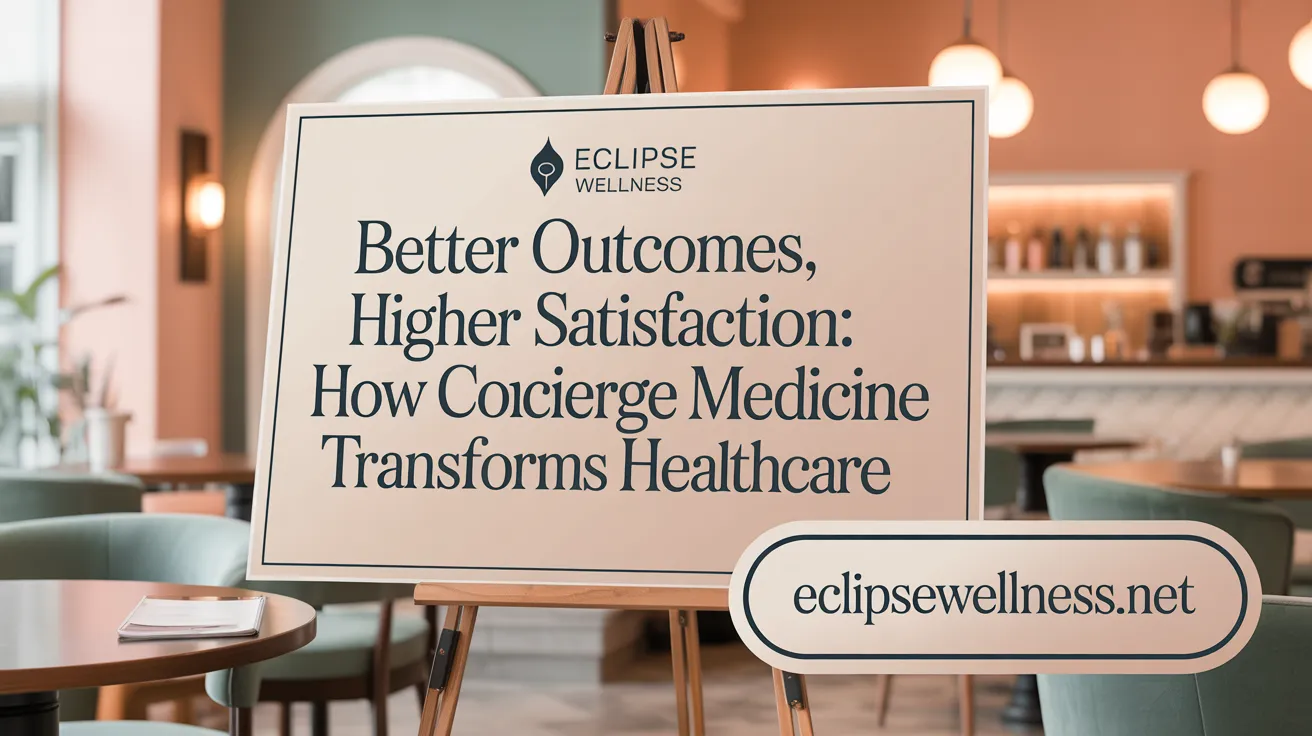Understanding Concierge Primary Care
Concierge primary care is reshaping the healthcare landscape by focusing on personalized, accessible, and proactive patient care. Unlike traditional primary care practices, concierge medicine offers patients enhanced services through membership models that prioritize quality, individualized attention, and stronger doctor-patient relationships. This article explores how concierge primary care improves patient experience by highlighting its core principles, distinct features, technological integration, and positive impacts on health outcomes and satisfaction.
What Sets Concierge Primary Care Apart from Traditional Models?

What is concierge primary care and how does it differ from traditional primary care?
Concierge primary care is a membership-based healthcare model offering a more personalized and accessible approach to healthcare. Patients typically pay an annual or monthly fee that grants them enhanced services such as longer appointment times, same-day or next-day visits, and direct communication channels like phone, email, or text with their physicians.
Unlike traditional primary care, which often involves managing large patient panels—sometimes over 2,000 patients—concierge practices limit their patient numbers to around 300 to 600. This smaller patient load allows doctors to spend more time with each individual, often up to an hour per visit, facilitating comprehensive assessments and personalized health strategies.
The payment structure also markedly differs. Traditional primary care relies mostly on insurance reimbursements, with patients facing co-pays and limited direct charges. Conversely, concierge medicine shifts the financial burden to the patient through membership fees, fostering a healthcare environment that emphasizes prevention, detailed diagnostics, and ongoing health management.
Physicians in this model can focus more on complex cases, proactive health planning, and building strong doctor-patient relationships, ultimately leading to higher satisfaction and better health outcomes.
In brief, concierge primary care offers increased access, longer consultations, personalized attention, and a shift away from insurance dependency, making it a distinctive approach to primary healthcare that prioritizes quality and patient engagement.
Enhancing Patient Satisfaction and Engagement Through Concierge Care

How does concierge primary care improve patient satisfaction and overall healthcare experience?
Concierge primary care significantly boosts patient satisfaction by providing a more personalized, attentive, and comprehensive healthcare experience. Patients typically enjoy longer consultation times—sometimes up to an hour—compared to the 15-minute visits in traditional settings. This allows physicians to thoroughly address health concerns, discuss preventive strategies, and develop tailored wellness plans.
A cornerstone of concierge care is direct communication. Patients have at their disposal multiple channels such as phone, email, or text to reach their physicians at any time, ensuring quick responses and reducing the frustration often associated with traditional practices.
The emphasis on building strong, trusting relationships leads to increased patient engagement and adherence to treatment plans. With personalized wellness strategies that incorporate genetic insights, lifestyle factors, and detailed health history, patients feel more empowered and involved in their health decisions.
Another major benefit is the ease and speed of appointments. Same-day or next-day scheduling, along with 24/7 access, minimizes wait times and makes urgent concerns easier to manage. Consequently, concierge medicine results in fewer emergency visits, lower hospitalization rates, and overall better health outcomes.
Together, these features create a healthcare environment that is more accessible, responsive, and focused on preventive and personalized care—factors that contribute to higher satisfaction and improved health management.
Core Principles and Quality Benefits of Concierge Primary Care

What are the key principles and benefits of concierge primary care related to the quality of patient care?
Concierge primary care is built on a foundation of personalized attention and proactive health management. This model allows physicians to dedicate more time to each patient, often with visits extending up to an hour compared to the standard 15-minute appointments in traditional practices. Patients benefit from longer, unrushed consultations, which foster stronger relationships and better communication with their doctors.
Accessibility is a major focus, with immediate or same-day appointments, 24/7 availability through calls, texts, or emails, and options like telemedicine. These features ensure timely interventions, quicker emergency care—up to 40% faster—and regular preventive screenings. As a result, patients are more engaged and adhere better to treatment plans, leading to improved health outcomes.
Studies show that concierge practices can significantly lower hospitalization rates—by about 40%—and improve overall health through early detection and comprehensive management of chronic conditions. Personalized health plans, which incorporate advanced diagnostics, genetic insights, and lifestyle factors, enable tailored treatments that promote wellness and reduce complications.
Continuity of care and individualized treatment are central, promoting safer, coordinated healthcare that responds precisely to patient needs. This focus on prevention and early intervention not only fosters higher satisfaction—reported at 90% in concierge settings—but also results in better management of mental health issues, chronic illnesses, and healthier aging.
Despite these advantages, there are ongoing concerns about healthcare equity. The model’s high costs and limited access raise questions about disparities and the creation of a two-tiered system. While patient outcomes and satisfaction improve within this framework, broader societal implications regarding equal access continue to challenge the sustainability and fairness of concierge medicine.
| Aspect | Traditional Model | Concierge Model | Benefits/Notes |
|---|---|---|---|
| Appointment Length | ~15 minutes | Up to 60 minutes | Better understanding and communication |
| Access | Standard hours, long wait times | Same-day, 24/7, telemedicine | Quicker care and peace of mind |
| Preventive Services | Varies, often limited | Regular screenings, advanced diagnostics | Proactive health management |
| Patient Relationship | Less personalized | Stronger doctor-patient bonds | Higher satisfaction and trust |
| Cost | Varies, often unpredictable | Fixed retainer fees ($1,200–$50,000/year) | Cost predictability and potential savings |
| Hospitalizations | Higher | Reduced by 40% | Early detection and chronic care |
Overall, concierge primary care elevates the quality of patient care through personalized, accessible, and preventive strategies, producing healthier and happier patients. Nevertheless, addressing issues of equity remains essential for the future integration of this model into widespread healthcare practice.
Positive Impact on Patient Outcomes and Healthcare Experience
 Concierge medicine has emerged as a transformative approach to healthcare, significantly improving patient outcomes and overall satisfaction. One of its primary benefits is the reduction in hospitalizations and better management of chronic conditions. Due to personalized care plans, longer and more comprehensive visits, and continuous monitoring, patients experience fewer complications and are better equipped to control health risks, especially for conditions like diabetes and hypertension.
Concierge medicine has emerged as a transformative approach to healthcare, significantly improving patient outcomes and overall satisfaction. One of its primary benefits is the reduction in hospitalizations and better management of chronic conditions. Due to personalized care plans, longer and more comprehensive visits, and continuous monitoring, patients experience fewer complications and are better equipped to control health risks, especially for conditions like diabetes and hypertension.
Patients in concierge practices also report higher trust levels and increased adherence to treatment regimens. The model's emphasis on building strong doctor-patient relationships, combined with frequent communication through direct channels such as phone, email, and text, fosters greater engagement. This accessible, responsive environment encourages patients to follow medical advice diligently, leading to improved health results.
Preventive care and early detection are at the core of concierge medicine. Regular screenings, advanced diagnostics, and lifestyle advice help identify health issues before they become severe, allowing for prompt intervention. Studies indicate that proactive health management through this model results in fewer hospital visits—by up to 40%—and reduces overall healthcare costs.
Streamlined communication and prompt care are vital components of this healthcare approach. Patients benefit from same-day or next-day appointments, 24/7 access to physicians, and personalized care strategies tailored to genetic and lifestyle factors. These features ensure faster responses during emergencies, quicker treatment initiation, and a more satisfying healthcare experience.
While clinical evidence supports the effectiveness of concierge medicine in improving health outcomes, it also raises ethical and economic considerations. Access disparities and potential higher costs for some populations highlight the need for ongoing research and policy discussions. Nonetheless, for those within this model, the benefits include not only better health results but also a more compassionate, accessible, and patient-centered healthcare experience.
Distinctive Features that Elevate the Patient Experience
What specific features of concierge primary care contribute to a better patient experience?
Concierge primary care is distinguished by several innovative features that significantly enhance the patient experience. One of the most notable is the longer appointment duration. Patients typically enjoy consultations lasting between 30 and 60 minutes, far longer than the standard 15-minute visit in traditional practices. These extended visits enable doctors to conduct comprehensive assessments, address multiple concerns, and develop personalized care strategies.
In addition to lengthier appointments, convenience is a core aspect. Patients frequently have access to same-day or next-day appointments, ensuring timely medical attention when needed most. This rapid scheduling is complemented by 24/7 direct communication channels such as phone calls, emails, or texts, allowing patients to reach their physicians at any time for questions or urgent needs.
A smaller patient panel size is another defining feature. With fewer patients to care for, physicians can dedicate more time and attention to each individual, creating stronger doctor-patient relationships built on trust and engagement. This setup also facilitates the development of highly personalized care plans, which leverage detailed medical exams, genetic data, and lifestyle information.
Furthermore, concierge practices often include in-house diagnostic services—like advanced imaging and lab testing—streamlining the diagnostic process and reducing wait times. Care coordination becomes more efficient with quick referrals and dedicated support personnel such as Personal Care Navigators who help patients navigate complex healthcare systems.
Collectively, these features foster a proactive, preventive, and patient-centered approach. Patients benefit from care that is not only more personalized but also more accessible, comprehensive, and timely, leading to higher satisfaction levels, better health outcomes, and a more positive healthcare experience overall.
Technological Innovations Enhancing Concierge Care
How do technological approaches and specialized treatments within concierge primary care improve patient experience?
Technological advances such as telemedicine, wearable health devices, and integrated electronic health records (EHRs) play a vital role in transforming concierge healthcare.
Telemedicine allows patients to consult with their physicians virtually, offering quick and easy access to care without the need for physical visits. Wearable devices monitor vital signs, activity levels, and other health metrics continuously, providing real-time data that supports proactive management of chronic conditions and early detection of potential health issues.
Integrated EHRs and patient portals create seamless communication channels between patients and healthcare providers. These platforms enable patients to access their medical information, schedule appointments, and send messages directly to their doctors at any time. This connection fosters a sense of empowerment and allows for more personalized, responsive care.
Data analytics tools analyze health data collected from wearables and EHRs to support preventive care and treatment adherence. For example, targeted alerts and customized health recommendations help patients stay on track with their wellness goals and medication plans.
Digital health apps further streamline healthcare experiences by simplifying appointment scheduling and facilitating ongoing communication. These tools help reduce administrative delays, ensuring timely interventions and continuous engagement.
In summary, technological innovations enable concierge practices to offer more accessible, efficient, and personalized care. The use of specialized treatments combined with digital tools enhances overall patient satisfaction, leading to better health outcomes and a more patient-centered healthcare experience.
| Technology Type | Patient Benefits | Supportive Features |
|---|---|---|
| Telemedicine | Virtual consultations, quick access | Video calls, messaging apps |
| Wearable Devices | Continuous health monitoring | Heart rate, activity trackers |
| Electronic Health Records | Easy information access, care coordination | Secure portals, real-time updates |
| Digital Health Apps | Appointment scheduling, communication | Reminders, chat functions |
Increased Access, Personalized Attention, and Simplified Healthcare Navigation
Concierge primary care transforms the patient experience by focusing on accessibility and personalized service. One of its main features is the smaller number of patients each physician manages, which allows for longer, more detailed consultations. These extended visits, often lasting up to an hour, enable doctors to understand each patient's health history comprehensively and tailor care plans accordingly.
Patients benefit from same-day or next-day appointments and have access to their physicians 24/7 through phone, text, or email. This level of availability means urgent concerns are addressed swiftly, often up to 40% faster than traditional practices, reducing stress and improving outcomes.
A significant advantage of this model is the simplified administrative process. Instead of dealing with complex insurance claims, patients pay a predictable membership fee—ranging from $1,200 to $50,000 annually—that covers most services. This retainer approach minimizes paperwork and administrative hassles, allowing physicians to focus more on clinical care instead of billing or administrative tasks.
Furthermore, concierge practices empower doctors with greater clinical autonomy. Freed from insurance limitations, physicians can make decisions based solely on patient needs, utilizing advanced diagnostics, preventive screenings, and personalized health strategies.
These features—smaller panels, timely appointments, constant accessibility, simplified payments, and clinical independence—combine to offer a healthcare experience that is more immediate, tailored, and less stressful for patients.
| Feature | Description | Patient Benefit |
|---|---|---|
| Smaller patient panels | Limited number of patients per physician | Longer, thorough consultations; personalized care |
| Same/next-day appointments | Quick scheduling options | Immediate attention to health concerns |
| 24/7 availability | Access via phone, email, or text anytime | Rapid response for urgent needs |
| Payment model | Membership fees, often annual | Less administrative hassle; predictable costs |
| Physician autonomy | Less reliance on insurance constraints | Higher quality, tailored treatment plans |
In summary, concierge primary care makes healthcare more accessible, personalized, and easier to navigate, creating a more satisfying patient experience.
Broader Implications: Ethical Considerations and Future Outlook
Ethical concerns about healthcare equity and two-tier systems
Concierge medicine's focus on personalized care and exclusive access raises ethical questions regarding healthcare fairness. Critics argue that it may create a two-tiered system where wealthier individuals receive superior care, potentially limiting access for less affluent populations. This could lead to disparities in health outcomes and undermine the goal of universal healthcare.
Cost considerations and varied pricing models
Patients generally pay annual retainer fees ranging from $1,200 to over $50,000, with options for monthly or quarterly payments. While some advocate that concierge services can reduce overall healthcare costs through preventive care and fewer hospitalizations, critics worry about the affordability and whether such models widen healthcare inequality.
Growth and adoption trends of concierge medical practices
As of 2024, approximately 12,000 physicians practice concierge medicine, reflecting expanding popularity. Leading programs like MDVIP and PartnerMD showcase successful implementations, with emphasis on longer visits, immediate access, and preventive care, attracting a broad spectrum of patients seeking high-quality, personalized health management.
Potential benefits and challenges moving forward
The model offers advantages such as improved patient satisfaction, better health outcomes, and greater physician focus. However, it faces hurdles like legal complexities, upfront marketing costs, and ethical debates about equity. Future developments will likely balance personalized care benefits with efforts to ensure broader access, possibly integrating traditional and concierge approaches.
The Future of Patient-Centered Care with Concierge Primary Care
Concierge primary care represents a transformative approach to healthcare that prioritizes patient experience through personalized, accessible, and proactive care. By fostering stronger doctor-patient relationships, using advanced technologies, and emphasizing preventive health management, concierge medicine achieves higher patient satisfaction and improved health outcomes. While challenges related to cost and equitable access remain, the model’s growth signals a shift toward more patient-centered healthcare paradigms. As the healthcare landscape evolves, concierge primary care offers valuable lessons and opportunities to enhance the quality and responsiveness of primary care for diverse patient populations.
References
- A literature review on the impact of concierge medicine ...
- 5 Ways Concierge Direct Primary Care Medicine Improves ...
- Why Personalized Care Improves Patient Satisfaction ...
- Concierge Healthcare Boosts Patient Satisfaction in These ...
- Guide to Understanding the Concierge Service Model
- How Concierge Medicine Enhances Quality of Care and ...
- Why Concierge Primary Care is Revolutionizing Healthcare
